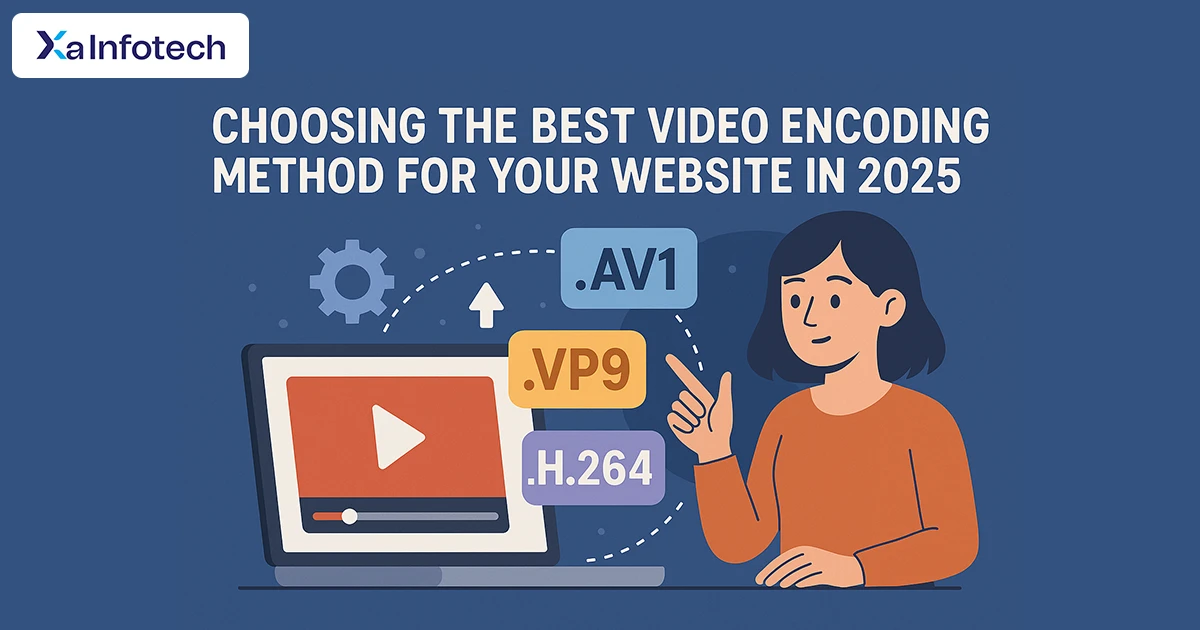Choosing the Best Video Encoding Method for Your Website in 2025
Video is the king of online content, but it’s also the biggest bandwidth hog. Choosing the right encoding method is the difference between a smooth, buffer-free user experience and a frustrating slideshow that drives visitors away.
The “best” video codec isn’t a single answer—it depends on your goals, your audience, and where the video will be played. This guide breaks down the modern codec landscape to help you make the right choice.
The Quick Answer: What to Use Right Now
For most use cases in 2024, the best choice is a combination of:
- H.264 (AVC): The universal fallback. Every device and browser made in the last 15+ years supports it. You must always provide an H.264 version.
- H.265 (HEVC) or AV1: The modern, efficient successors. Use these to provide a high-quality experience at half the file size for supported devices.
The “Best” is a Strategy, Not a Single Codec. The professional approach is to encode your video in multiple formats and use the HTML <video> tag with <source> elements to let the browser choose the best one it supports.
<video controls>
<source src="video.mp4" type="video/mp4"> <!-- H.264 fallback -->
<source src="video.webm" type="video/webm"> <!-- VP9/AV1 for Chrome/Firefox -->
</video>Breaking Down the Top Video Codecs
A codec (coder/decoder) is the algorithm that compresses and decompresses your video file. A container (like .mp4 or .webm) is the “wrapper” that holds the video, audio, and metadata.
| Codec | Full Name | Best For | Pros | Cons |
| H.264 (AVC) | Advanced Video Coding | Universal Compatibility. Your default & fallback. | • Near-universal support• Excellent tooling & encoding speed• The safe bet for any project | • Least efficient by modern standards (larger files) |
| H.265 (HEVC) | High Efficiency Video Coding | Quality at lower bitrates. Premium content, 4K/HDR. | • ~50% smaller files than H.264 at same quality• Standard for 4K Blu-ray, Apple streaming• Good hardware support on newer devices | • Complex licensing fees for encoders/decoders• Patchy browser support (no Firefox) |
| AV1 | AOMedia Video 1 | The Open Future. Cutting-edge efficiency for web. | • Best-in-class compression (~30% better than HEVC)• Royalty-free (no licensing costs)• Backed by tech giants (Google, Apple, Netflix, etc.) | • Very slow encoding times (computationally intense)• Hardware support still growing (but now in most new devices) |
| VP9 | Video Processor 9 | YouTube & Google Ecosystem. A predecessor to AV1. | • Free, open alternative to H.265• Great browser support (Chrome, Firefox, Edge)• Widely used by YouTube | • Being superseded by AV1• Less efficient than AV1 and HEVC |
How to Choose: A Decision Guide
1. For Maximum Compatibility (The Safe Bet)
- Primary Codec: H.264
- Container: .mp4
- Why: This is your non-negotiable baseline. Every phone, smart TV, desktop, and browser can play it. If you only provide one version, it must be this one.
2. For High Quality & Modern Efficiency (The Professional Choice)
- Strategy: Encode in two formats.
- Primary Codec: H.265 (HEVC) or AV1
- Fallback Codec: H.264
- Why: You serve the efficient H.265/AV1 version to browsers that support it (saving them bandwidth and providing better quality) and the H.264 version to everyone else. This is what Netflix, YouTube, and Vimeo do.
3. For the Open Web & Future-Proofing (The Cutting Edge)
- Primary Codec: AV1
- Fallback Codec: VP9 → H.264
- Why: If you want to avoid licensing issues and align with the open standard that is rapidly gaining support. Be prepared for very long encoding times. Ideal for large platforms with massive bandwidth bills.
4. For Real-Time Streaming (Live Video)
- Primary Codec: For broad compatibility, H.264 is still the king of live streaming.
- Emerging Standard: AV1 is making inroads here with SVT-AV1 encoder, but support is not yet universal.
Critical Best Practices for Video Encoding
Choosing the codec is only half the battle. How you encode is just as important.
- Use a Constant Rate Factor (CRF) Encoding: This is a quality-based encoding mode, not a fixed bitrate. It allocates more bits to complex scenes and fewer to simple ones, giving you the best quality for the file size. A CRF of 18-23 is a good standard range (lower = better quality, larger file).
- Choose the Right Bitrate: If you must use bitrate (e.g., for adaptive streaming), tailor it to the resolution:
- 1080p: 3,500 – 6,000 kbps
- 720p: 1,500 – 3,000 kbps
- 480p: 500 – 1,500 kbps
- Use Adaptive Streaming (HLS/DASH): For professional results, don’t serve a single video file. Create multiple versions at different bitrates (e.g., 480p, 720p, 1080p) and use formats like HLS (.m3u8) or MPEG-DASH. This allows the player to automatically switch quality based on the user’s network speed.
- Don’t Forget Audio: Use the AAC codec for audio inside your .mp4 container. It’s efficient and universally supported. For .webm, use Opus.
Recommended Encoding Software
- FFmpeg: The powerful command-line Swiss Army knife for video. Industry standard.
- HandBrake: A fantastic free and open-source GUI that uses FFmpeg under the hood. Perfect for beginners and pros alike.
- Shutter Encoder: Another excellent GUI-based alternative with advanced features.
Final Verdict
There is no single “best” codec. The best strategy is to provide multiple versions.
- For 99% of websites: Provide an H.264 (.mp4) fallback and a H.265 (.mp4) or VP9/AV1 (.webm) version for supported browsers.
- This balances incredible reach with modern efficiency, ensuring a fast, high-quality experience for every user while saving you money on bandwidth.
Start by mastering H.264 encoding with HandBrake, then experiment with adding an AV1 or HEVC version to your workflow.

